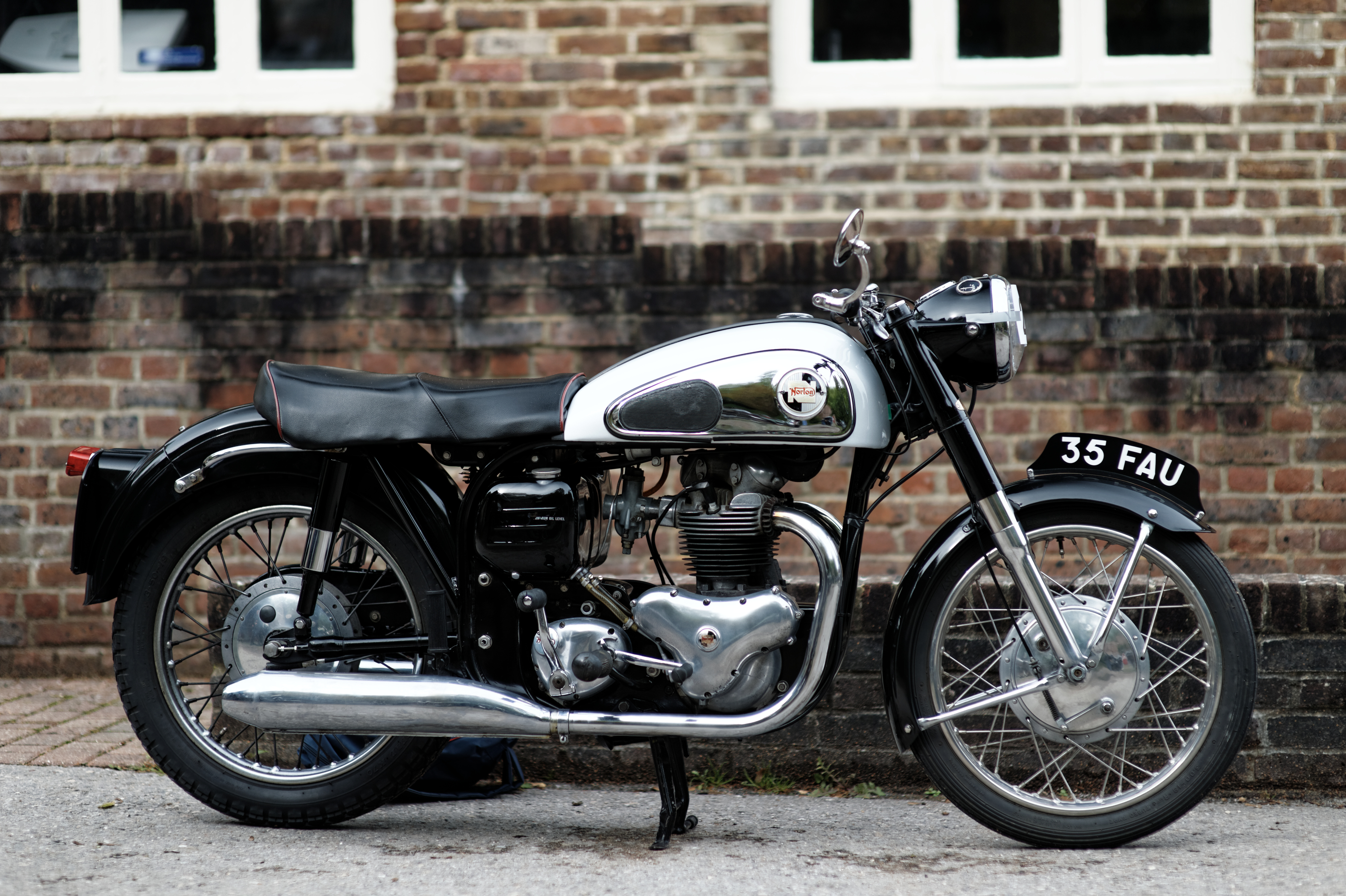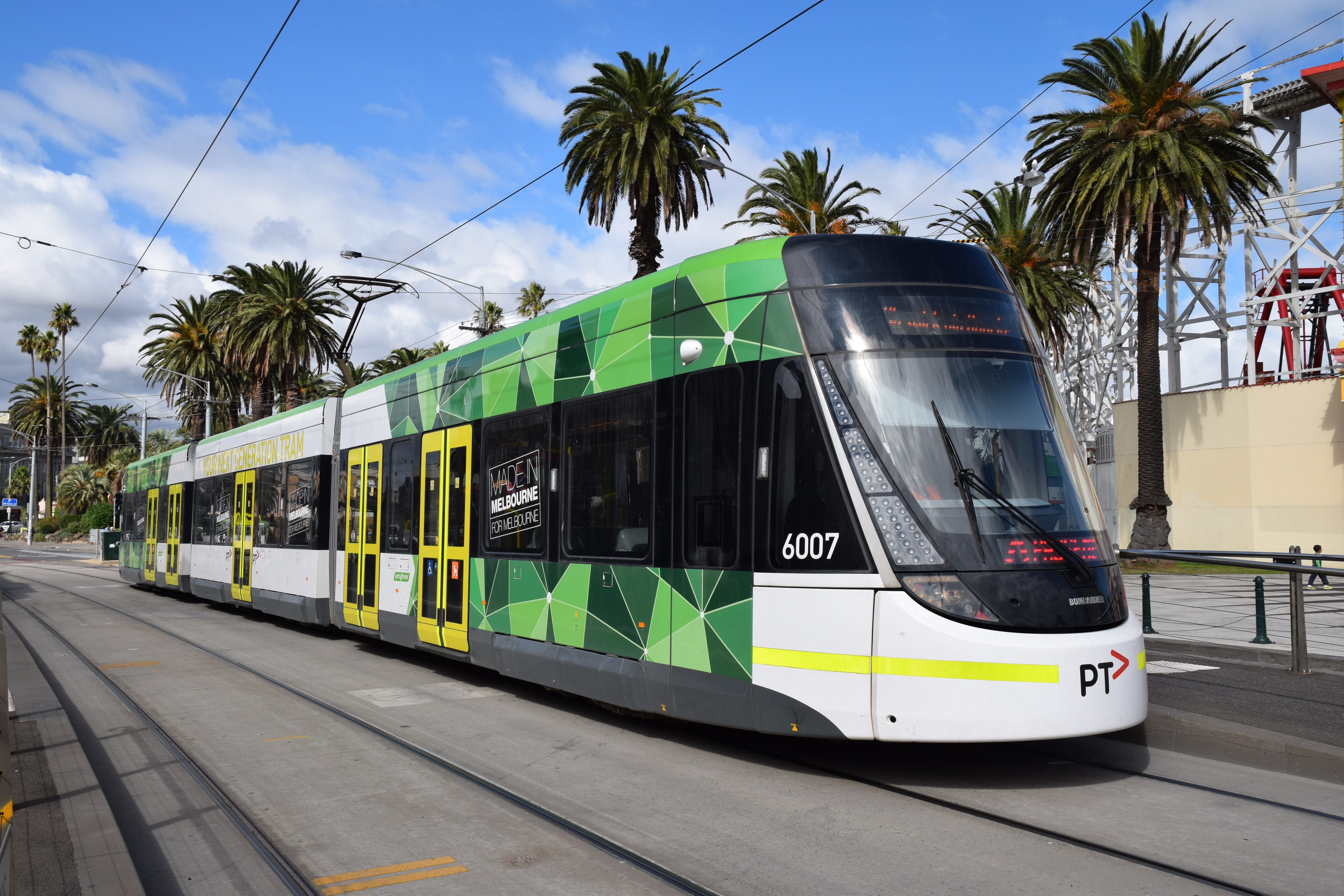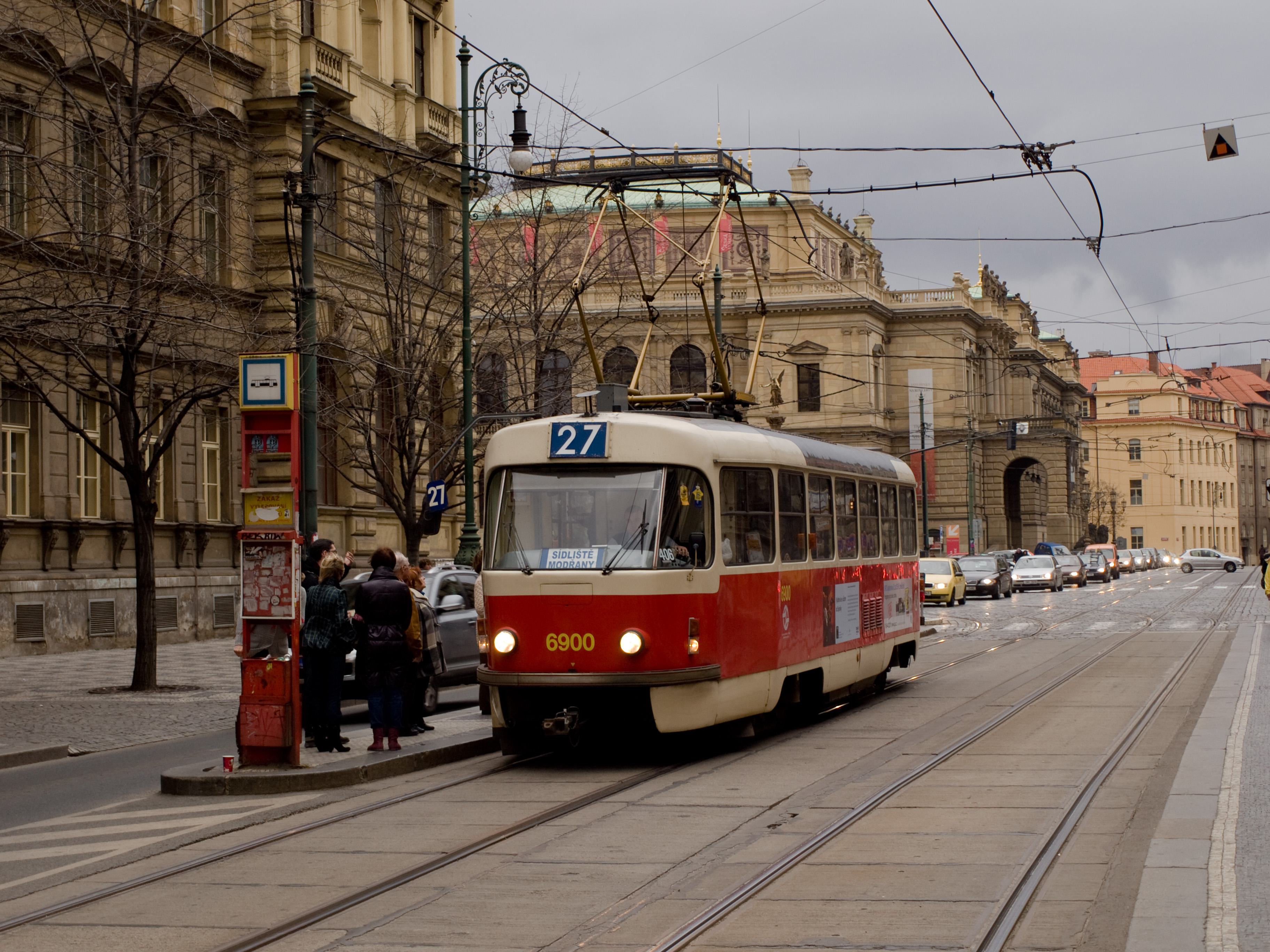|
Valmet Nr II
Nr II is a class of articulated six-axle (B′2′B′ wheel arrangement), chopper-driven tram operated by Helsinki City Transport (HKL) on the Helsinki tram network. All trams of this type were built by the Finnish metal industry corporation Valmet between the years 1983 and 1987. Between 1996 and 2005 all trams in the class were modernised by HKL and redesignated as Nr II+ class. From 2006-2011, all trams of this class were rebuilt with a low-floor midsection and redesignated as MLNRV II. History The Nr II class was a further development of the Nr I class built by Valmet for the HKL between 1973 and 1975 (the Nr I was in turn based on the popular Duewag-built GT6 class). The Nr I and Nr II classes are virtually identical in their exterior and interior designs, with exception of the tail lights. The first three Nr II class trams were delivered to Helsinki City Transport (HKL) in 1983, followed by an additional 11 in both 1984 and 1985, further ten in 1986, and the final seven ... [...More Info...] [...Related Items...] OR: [Wikipedia] [Google] [Baidu] |
Valmet
Valmet Oyj is a Finnish company and a developer and supplier of technologies, automation systems and services for the pulp, paper and energy industries. Valmet has over 200 years of history as an industrial operator. Formerly owned by the State of Finland, Valmet was reborn in December 2013 with the demerger of the pulp, paper and power businesses from Metso Corporation. Valmet's services include maintenance outsourcing, mill and power plant improvements, and spare parts. The company provides technology for pulp, tissue, board and paper mills and bioenergy plants. Valmet has operations in more than 40 countries and it employs about 17,000 people. Its headquarters are located in Espoo, and it is listed on the Nasdaq Helsinki. In 2021, Valmet's net sales totaled €3.9 billion. History Historical products During its history, Valmet has made ships, trains, aeroplanes, tractors, clocks and weapons, as described in the list of Valmet products. Roots in the 18th century Th ... [...More Info...] [...Related Items...] OR: [Wikipedia] [Google] [Baidu] |
Wheel Arrangement
In rail transport, a wheel arrangement or wheel configuration is a system of classifying the way in which wheels are distributed under a locomotive. Several notations exist to describe the wheel assemblies of a locomotive by type, position, and connections, with the adopted notations varying by country. Within a given country, different notations may also be employed for different kinds of locomotives, such as steam, electric, and diesel powered. Especially in steam days, wheel arrangement was an important attribute of a locomotive because there were many different types of layout adopted, each wheel being optimised for a different use (often with only some being actually "driven"). Modern diesel and electric locomotives are much more uniform, usually with all axles driven. Major notation schemes The main notations are the Whyte notation (based on counting the wheels), the AAR wheel arrangement notation (based on counting either the axles or the bogies), and the UIC class ... [...More Info...] [...Related Items...] OR: [Wikipedia] [Google] [Baidu] |
Cockpit
A cockpit or flight deck is the area, usually near the front of an aircraft or spacecraft, from which a Pilot in command, pilot controls the aircraft. The cockpit of an aircraft contains flight instruments on an instrument panel, and the controls that enable the pilot to fly the aircraft. In most airliners, a door separates the cockpit from the aircraft cabin. After the September 11 attacks, September 11, 2001 attacks, all major airlines Airport_security_repercussions_due_to_the_September_11_attacks#Improved_security_on_aircraft, fortified their cockpits against access by aircraft hijacking, hijackers. Etymology The word cockpit seems to have been cockpit (sailing), used as a nautical term in the 17th century, without reference to cock fighting. It referred to an area in the rear of a ship where the cockswain's station was located, the cockswain being the pilot of a smaller "boat" that could be dispatched from the ship to board another ship or to bring people ashore. The ... [...More Info...] [...Related Items...] OR: [Wikipedia] [Google] [Baidu] |
Motorcycle
A motorcycle (motorbike, bike, or trike (if three-wheeled)) is a two or three-wheeled motor vehicle steered by a handlebar. Motorcycle design varies greatly to suit a range of different purposes: long-distance travel, commuting, cruising, sport (including racing), and off-road riding. Motorcycling is riding a motorcycle and being involved in other related social activity such as joining a motorcycle club and attending motorcycle rallies. The 1885 Daimler Reitwagen made by Gottlieb Daimler and Wilhelm Maybach in Germany was the first internal combustion, petroleum-fueled motorcycle. In 1894, Hildebrand & Wolfmüller became the first series production motorcycle. Globally, motorcycles are comparably popular to cars as a method of transport. In 2021, approximately 58.6 million new motorcycles were sold around the world, fewer than the 66.7 million cars sold over the same period. In 2014, the three top motorcycle producers globally by volume were Honda (28%), Yama ... [...More Info...] [...Related Items...] OR: [Wikipedia] [Google] [Baidu] |
Duewag
Düwag or Duewag, formerly Waggonfabrik Uerdingen, was a German manufacturer of rail vehicles. It was sold in 1999 to Siemens with the brand later retired. History Duewag was founded in March 1898 as Waggonfabrik Uerdingen in Uerdingen and produced rail vehicles under the Düwag brand. After merging with Düsseldorfer Waggonfabrik in 1935, railway vehicles were built in Uerdingen, while the Düsseldorf plant produced mainly local traffic vehicles, namely tramway and light rail vehicles. In 1981, the company changed its name from Waggonfabrik Uerdingen to Duewag. Siemens acquired a 60% shareholding in 1989 before taking full ownership in April 1999. In 2001, the Düsseldorf plant was closed with production transferred to Uerdingen. Duewag vehicles were close to a monopoly market in West Germany, as nearly every tram and light rail vehicle purchased from the 1960s onward was built by Duewag. Products *Uerdingen railbus * Buffel (DM'90) *GT8 tramcar in various versions *G ... [...More Info...] [...Related Items...] OR: [Wikipedia] [Google] [Baidu] |
Valmet Nr I
Nr I is a class of articulated six-axle (B′2′B′ wheel arrangement), chopper-driven tram operated by Helsinki City Transport on the Helsinki tram network. All trams of this type were built by the Finnish metal industry corporation Valmet between the years 1973 and 1975. Between 1993 and 2004 all trams in the class were modernised by HKL and redesignated as Nr I+ class. Currently HKL classifies them as NRV I. Overview Nr I were the first type of articulated tram operated by the HKL. The design of the Nr I type trams was based on the GT6 type trams built by Duewag for various cities in western Europe since 1956, but the Nr I incorporated several technological innovations that had not been available when the GT6 was designed. The Nr I trams were delivered by Valmet between 1973 and 1975, with the first seven trams delivered in 1973, further 18 delivered in 1974 and the final 15 in 1975. As the first mass-produced tram type in the world, the Nr I featured thyristor chopper cont ... [...More Info...] [...Related Items...] OR: [Wikipedia] [Google] [Baidu] |
Tram In Helsinki In 1987
A tram (called a streetcar or trolley in North America) is a rail vehicle that travels on tramway tracks on public urban streets; some include segments on segregated right-of-way. The tramlines or networks operated as public transport are called tramways or simply trams/streetcars. Many recently built tramways use the contemporary term light rail. The vehicles are called streetcars or trolleys (not to be confused with trolleybus) in North America and trams or tramcars elsewhere. The first two terms are often used interchangeably in the United States, with ''trolley'' being the preferred term in the eastern US and ''streetcar'' in the western US. ''Streetcar'' or ''tramway'' are preferred in Canada. In parts of the United States, internally powered buses made to resemble a streetcar are often referred to as "trolleys". To avoid further confusion with trolley buses, the American Public Transportation Association (APTA) refers to them as " trolley-replica buses". In the U ... [...More Info...] [...Related Items...] OR: [Wikipedia] [Google] [Baidu] |
Tram
A tram (called a streetcar or trolley in North America) is a rail vehicle that travels on tramway tracks on public urban streets; some include segments on segregated right-of-way. The tramlines or networks operated as public transport are called tramways or simply trams/streetcars. Many recently built tramways use the contemporary term light rail. The vehicles are called streetcars or trolleys (not to be confused with trolleybus) in North America and trams or tramcars elsewhere. The first two terms are often used interchangeably in the United States, with ''trolley'' being the preferred term in the eastern US and ''streetcar'' in the western US. ''Streetcar'' or ''tramway'' are preferred in Canada. In parts of the United States, internally powered buses made to resemble a streetcar are often referred to as "trolleys". To avoid further confusion with trolley buses, the American Public Transportation Association (APTA) refers to them as " trolley-replica buses". In the ... [...More Info...] [...Related Items...] OR: [Wikipedia] [Google] [Baidu] |
Chopper (electronics)
In electronics, a chopper circuit is any of numerous types of electronic switching devices and circuits used in power control and signal applications. A chopper is a device that converts fixed DC input to a variable DC output voltage directly. Essentially, a chopper is an electronic switch that is used to interrupt one signal under the control of another. In power electronics applications, since the switching element is either fully on or fully off, its losses are low and the circuit can provide high efficiency. However, the current supplied to the load is discontinuous and may require smoothing or a high switching frequency to avoid undesirable effects. In signal processing circuits, use of a chopper stabilizes a system against drift of electronic components; the original signal can be recovered after amplification or other processing by a synchronous demodulator that essentially un-does the "chopping" process. Comparison (step down chopper and step up chopper) Comparison bet ... [...More Info...] [...Related Items...] OR: [Wikipedia] [Google] [Baidu] |





